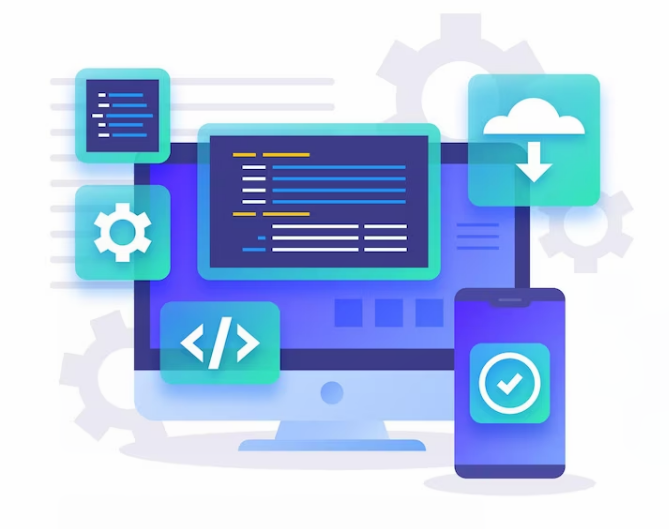Introduction
Software is the soul of modern technology. It’s the invisible force that powers our devices, allowing us to accomplish a wide range of tasks with ease. In this article, we’ll take a closer look at seven distinct types of software and gain a deeper understanding of their functions and significance in our lives.
System Software
2.1 Operating Systems
At the foundation of every computing device lies an operating system (OS). It serves as the intermediary between hardware and software, managing resources and providing a platform for other applications to run. Common examples include Microsoft Windows, macOS, and Linux.
2.2 Device Drivers
Device drivers are a subset of system software responsible for enabling communication between the operating system and hardware components like printers, graphics cards, and sound cards. These drivers ensure that the hardware functions correctly and efficiently.
Application Software
Application software is what most people interact with on a daily basis. It’s the software designed for specific tasks and activities.
3.1 Productivity Software
Productivity software encompasses tools like word processors, spreadsheets, and presentation software. Microsoft Office and Google Workspace are prime examples. They help streamline tasks related to work, education, and personal organization.
3.2 Entertainment Software
When it’s time to unwind, entertainment software comes into play. Video games, streaming services, and multimedia players fall under this category. They provide hours of enjoyment and relaxation.
3.3 Communication Software
Staying connected is essential in today’s world. Communication software includes email clients, messaging apps, and video conferencing tools. Think of Outlook, WhatsApp, and Zoom, which keep us linked to friends, family, and colleagues.
Programming Software
4.1 Integrated Development Environments (IDEs)
For the tech-savvy individuals, IDEs are indispensable. These software suites facilitate the coding process by offering code editors, debuggers, and compilers. Popular choices include Visual Studio and PyCharm.
4.2 Text Editors
Text editors are simpler alternatives to IDEs. They are used for basic code editing and are favored by many programmers for their speed and simplicity. Notepad++ and Sublime Text are widely used text editors.
Utility Software
Utility software encompasses a broad range of tools designed to optimize and maintain your system. Antivirus software, disk cleaners, and backup utilities all fall into this category. They ensure your computer runs smoothly and securely.
Middleware Software
Middleware software acts as a bridge between different applications and enables them to communicate with each other. This is crucial in complex systems where various software components need to work in harmony.
Firmware Software
Firmware software is found embedded in hardware devices like smartphones, routers, and game consoles. It provides the low-level instructions necessary for the hardware to function correctly.
Conclusion
In a world driven by technology, understanding the various types of software is essential. System software keeps our devices running, application software enhances our productivity and entertainment, programming software empowers developers, utility software maintains our systems, middleware software fosters communication, and firmware software ensures our devices function as intended. The synergy of these software types shapes the digital landscape we navigate daily.
Whether you’re a tech enthusiast or a casual user, recognizing the role software plays in your life can lead to a more profound appreciation of the technology that surrounds us.
FAQs
1. What is the difference between system software and application software?
System software manages the hardware and provides a platform for other software to run, while application software is designed for specific tasks or activities, such as word processing or gaming.
2. Can you give examples of middleware software?
Common examples of middleware software include web servers like Apache, message brokers like RabbitMQ, and database management systems like MySQL.
3. Why is firmware software important?
Firmware software is essential because it provides low-level instructions that enable hardware devices to function correctly. Without firmware, devices like smartphones and routers would not work.
4. What is the role of utility software?
Utility software is designed to optimize and maintain computer systems. It includes tools like antivirus software, disk cleaners, and backup utilities to ensure the system runs smoothly and securely.
5. How do I choose the right text editor for coding?
The choice of a text editor for coding depends on your preferences and needs. Some popular options include Notepad++, Sublime Text, Visual Studio Code, and PyCharm. Try a few to see which one suits your coding style best.

